Kip Williams’ cine-theatre revolution leads list of Australia’s best cultural inventors
He is the pioneer of ‘cine-theatre’ whose latest five-star production is headed to the West End and will feature a Hollywood star. Kip Williams leads our list of cultural innovators | FULL LIST
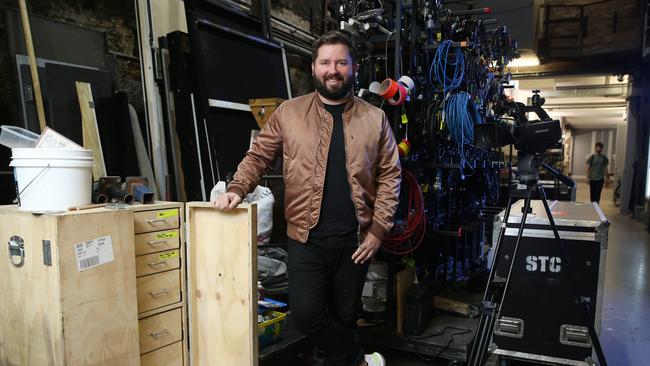
In 2015, when Kip Williams devised his radical production of Tennessee Williams’ Suddenly Last Summer for the Sydney Theatre Company, Australia’s largest theatre troupe was rattled.
Starring theatre doyenne Robyn Nevin, rising star Eryn Jean Norvill – and a roving crew of black-clad videographers who prowled the stage – Suddenly Last Summer was Williams’s first ‘cine-theatre’ production, in which traditional performance is fused with live and recorded video.
Kip Williams recalls how, shortly before the show opened, the STC “sent out a pre-emptive brief to the audience to warn them about the presence of cameras on stage. We were terrified people would walk out.’’
Discover the 50 Australian inventions changing the world in The Weekend Australian Magazine’s Ideas Issue this Saturday.
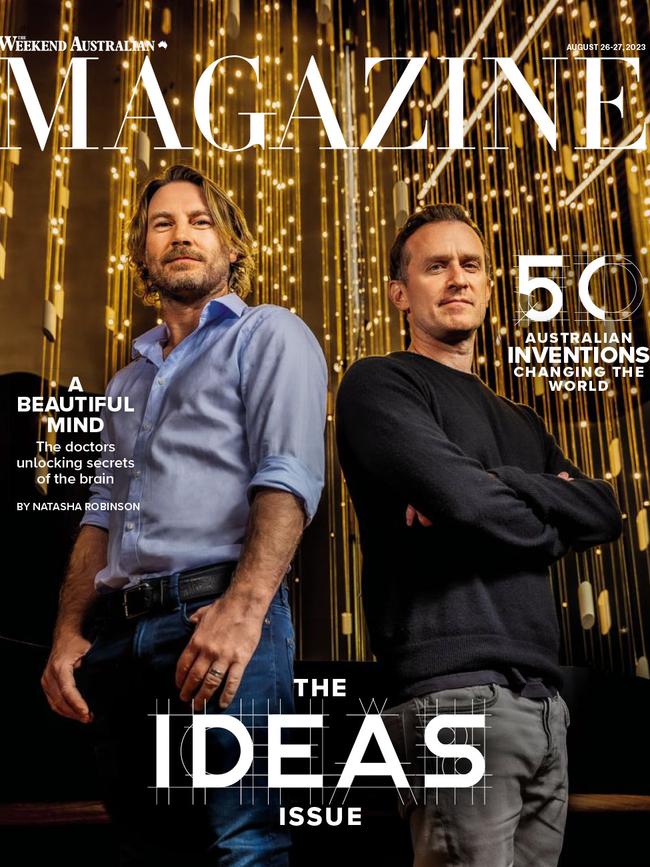
The production’s opening scenes were filmed live behind a tall white wall that separated the actors and audience, while huge, projected close-ups of different performers’ faces conveyed how Tennessee Williams’ darkly poetic tale about a mother who goes to extreme lengths to protect her son’s memory is propelled by competing perspectives of the truth.
Despite the STC’s fears, Suddenly Last Summer sold out and earned the company’s then 28-year-old resident director a Helpmann Award for best direction. Kip Williams is now the flagship company’s artistic director and co-CEO, and with considerable understatement he says that production’s success “led to further opportunities to continue to experiment with cameras and screens in the theatre’’.
In fact, the 36-year-old NIDA graduate is now seen as the pioneer of convention-busting cine-theatre shows that are reinventing theatre and have played to capacity audiences around the country.
His cine-theatre adaptation of Oscar Wilde’s only novel, The Picture of Dorian Gray, about a young man who exchanges his soul for the promise of eternal youth, famously featured a tour-de-force performance by Norvill, who played all 26 characters.
Now, this award-winning show, which has been seen by 145,000 Australians and New Zealanders, is heading further afield: it will be staged in London’s West End in January 2024 and Succession alumnus Sarah Snook will seek to replicate Norvill’s shapeshifting feat. After that, it’s hoped the production will have a Broadway outing.
Premiering at STC in 2020, Dorian Gray was a dazzling visual spectacle that retained the integrity of Wilde’s text. It generated five-star reviews and won multiple Sydney Theatre and Green Room awards, with The Age calling it a “masterpiece no one should miss” and Time Out declaring this one-woman show was “a reinvention of theatre’’. In 2022, The Guardian declared: “Kip Williams has revolutionised the stage with his use of ‘cine-theatre’.’’
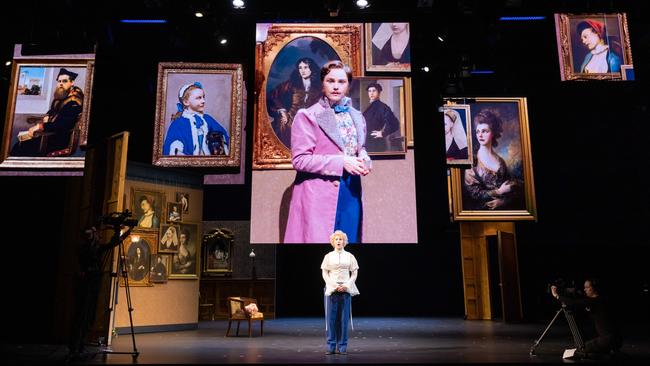
Norvill played male and female characters including Gray, amoral libertine Lord Henry Wotton, Dorian’s doomed lover Sybil Vane and her brother; in an eye-popping and ingenious dinner party scene, the conversation flowed between seven of her alternative selves. (Later in the tour, actor Nikki Shiels took on some performances.)
These shows are fiendishly complex: Williams describes them as “a bit like running a marathon through a blizzard, while trying to complete 70 Rubik’s cubes’’. During every performance, up to eight cameras produce hundreds of shots that are edited live. There are also hundreds of marks on stage that the actors and crew need to hit “with millimetre precision’’.
The Australian’s Sydney theatre critic, John McCallum, considers Williams’ adaptation of Dorian Gray “a work of genius”, although he wasn’t always convinced of the merits of video on stage. “I used to be a bit cynical about it,’’ he says. With some hybrid shows he felt “you might as well make a movie, but Kip’s work has changed my mind; it’s not just a substitute for a movie. The great thing about Dorian Gray was that the complex dance of interactions between EJ [Norvill], her dressers, the crew and the moving screens made them all active participants … There are antecedents, but Kip has certainly done something new and is certainly expanding the possibilities of theatre.’’
The director’s film-theatre hybrids generate an exquisite tension between what’s real (the physical actors) and illusory (actors performing alongside other screen versions of themselves). Williams is a serial risk-taker – for his 2014 Macbeth starring Hugo Weaving, audiences had to sit on the stage – and he argues that this tension, combined with mobile phone and apps technology, “is opening up a new terrain for storytelling in the theatre’’.
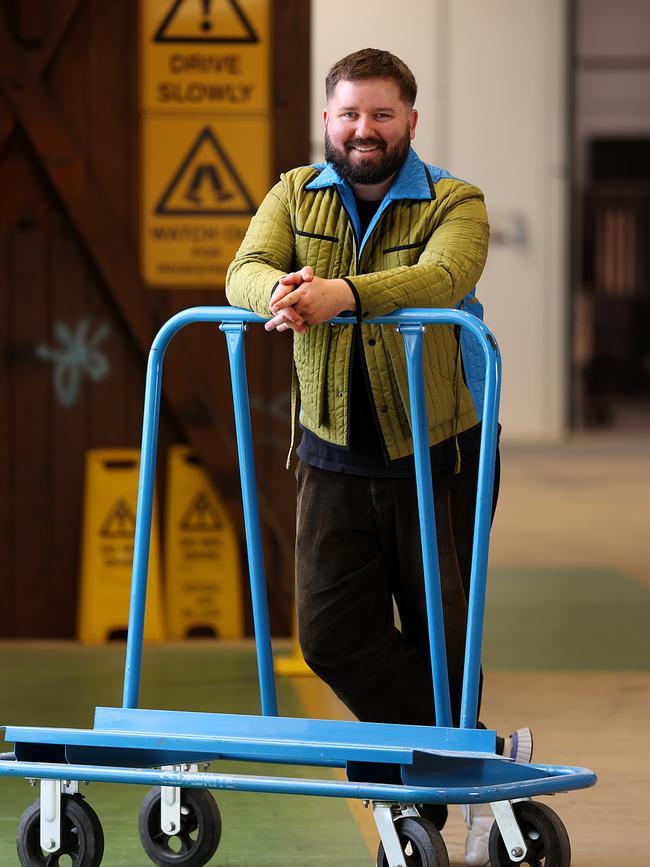
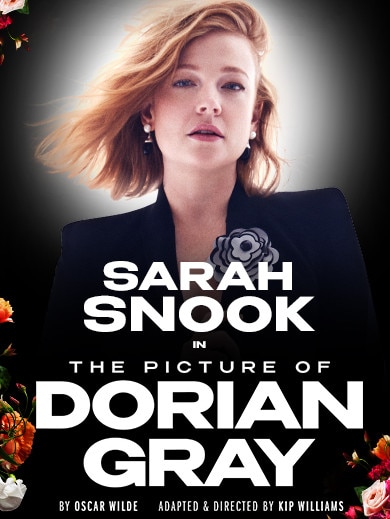
Video has been used in theatre since the 1980s by auteurs including Robert Wilson and Benedict Andrews, so what makes Williams’ shows different? He says actors performing simultaneously live on stage, in live video and in prerecorded video is breaking new ground. His most recent cine-theatre production was 2022’s Strange Case of Dr Jekyll and Mr Hyde, a noirish adaptation (replete with thick fog, gas street lights and black and white video screens) of Robert Louis Stevenson’s Gothic novella. Starring Ewen Leslie and Matthew Backer, this story of deception and dual identity was another hit for the STC. The technical wizardry that underpins these shows means the potential for stress and mishaps is high, but Williams maintains that “it’s also incredibly fun, because there’s this thrill of being able to pull off something that feels impossible. I think that walking the tightrope element of it is something the audience feels when they watch it and really relishes.’’ – Rosemary Neill
The Australian inventions changing the world
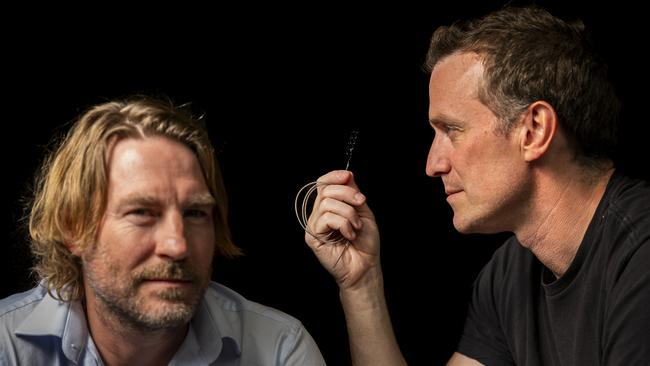
Brain powered: control a computer with your thoughts
It was once the realm of science fiction. Now, a brain-computer interface developed by this Aussie team promises to revolutionise and reshape the way we communicate.

Soldier’s best friend: why ‘Bushie’ is a great Aussie invention
Since it entered service the Bushmaster has saved hundreds of Diggers from landmines, IEDs and enemy fire – it’s one of our country’s best industrial innovations. | FULL LIST
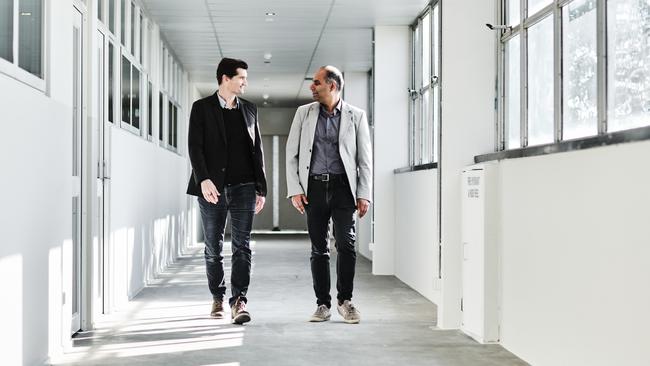
Can these engineers disrupt a billion dollar market?
Their microneedle medical patch designed to monitor the efficacy of administered drugs is among the top Australian medical breakthroughs improving human health. | FULL LIST
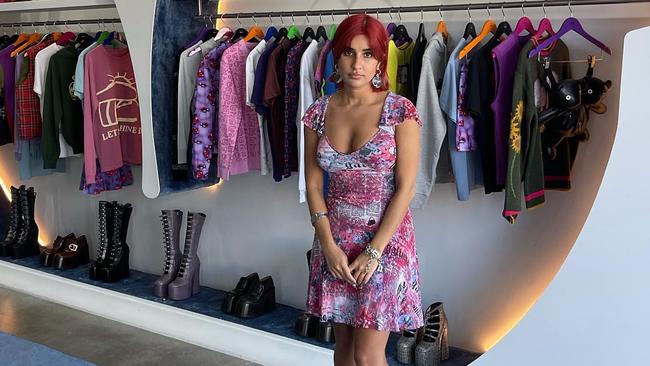
Heaven sent: two Aussie punks take over Marc Jacobs’ world
When the fashion supremo needed a breath of fresh air he turned to two Australian creatives - Ava Nirui and Elliot Shields. The pair are now among our leading fashion innovators | FULL LIST
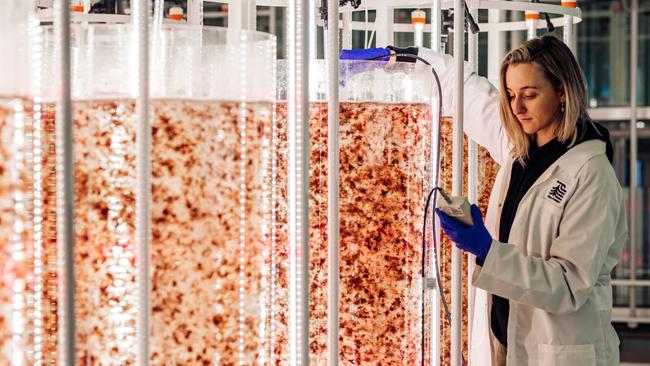
How a Tassie seaweed farm can help save world
Methane-eating seaweed, avocados grown in a lab, and the march of the flat white towards World Domination. In the world of sustainability, food technology and dining, these Aussies are making a global impact. | FULL LIST
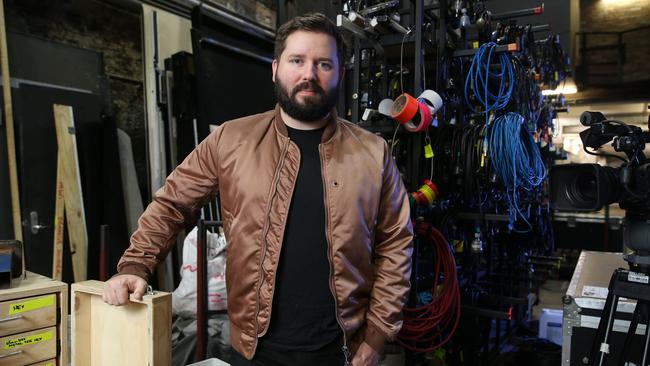
Man behind the ‘masterpiece nobody should miss’
He is the pioneer of ‘cine-theatre’ whose latest five-star production is headed to the West End and will feature a Hollywood star. Kip Williams leads our list of cultural innovators | FULL LIST
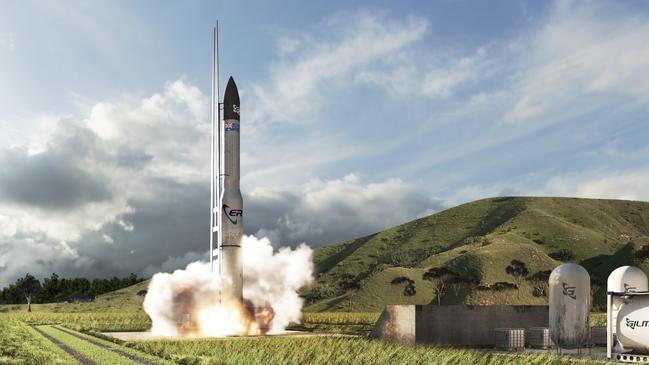
The Aussie company out to send astronauts to the moon
A plan to send a 25-metre tall rocket into orbit from a North Queensland spaceport is just the beginning for Gilmour Space, who lead our list of Australian tech and gadgetry innovations making an impact in 2023.
Australia’s best cultural innovators
Virtual Holocaust Museum
The new Queensland Holocaust Museum in Brisbane is launching the world’s first virtual and interactive journey through one of the darkest chapters in human history. Unlike other virtual exhibits, it won’t show visitors around bricks and mortar museum-based installations, but rather, it transports them to 1930s Europe via virtual reality and artificial intelligence. The result is almost total immersion; the sounds of trains and Yiddish music can be heard as you “walk” across cobblestone streets, passing beautiful synagogues. The user can step inside Jewish homes, a ghetto and the Reichstag, and, chillingly, inside a train transporting prisoners to Auschwitz. All of this is interspersed with testimony from Queensland’s own survivors of the Holocaust. Of 27,000 survivors who migrated to Australia following World War II, about 200 settled in Queensland, and their recollections of the time are recorded here for a new generation. – Jessica Clement
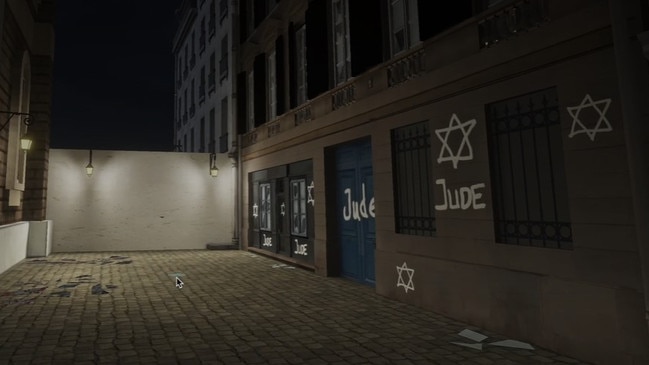
Frazier Lens
A career spent filming the natural world in exotic, far-flung places alongside Sir David Attenborough instilled in Jim Frazier a kind of on-the-spot and in-the-moment ingenuity. So when he grew frustrated with the technical limitations of his camera equipment, he set about finding the solution himself. The result? A lens that provides a massive depth of field, allowing both the foreground and the background to be in focus. Now know as the Frazier Lens, the invention was snapped up by Panavision in the ’90s and used in some of Hollywood’s biggest blockbusters – Steven Spielberg’s Jurassic Park and James Cameron’s Titanic among them – as well as wildlife cinematography and commercials. Panavision says the lens is still on high rotation and was used most recently by the Robert Downey Jr/Netflix production Sweet Tooth, shot in New Zealand. Frazier died at his home near Taree, NSW, in September 2022. – Jessica Clement
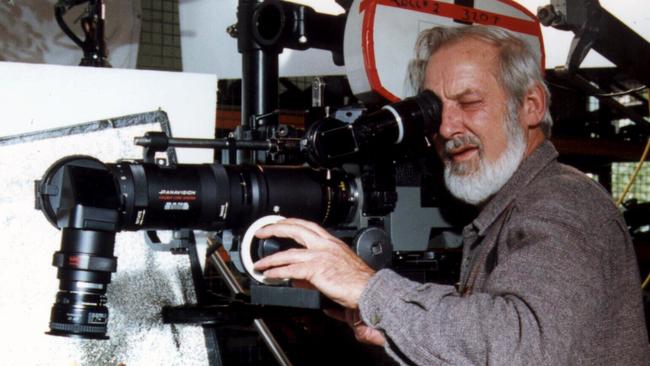
Causeway Films
From Wake in Fright to Wolf Creek, through to Leigh Whannell and James Wan’s Saw franchise, Australia has long had a pedigree in creating toe-curling, excruciating, stick-with-you-forever horror films.
But today, seekers of cerebral and smart horror the world over have their eyes trained on one production house Down Under – Causeway Films.
Samantha Jennings and Kristina Ceyton launched the production company, based in Sydney’s Leichhardt, after collaborating on Jennifer Kent’s eerie thriller The Babadook. Ever since, the independent company has consistently punched above its weight, producing films that have earned accolades at festivals locally and internationally.
Notable examples include Kent’s The Nightingale (Venice 2018), Yolanda Ramke and Ben Howling’s Cargo (Tribeca 2018), Goran Stolevski’s You Won’t Be Alone (Sundance 2020), Del Kathryn Barton’s Blaze (Tribeca 2022), and Danny and Michael Philippou’s Talk To Me (Sundance), which was acquired by the production studio A24 for a reported “high-seven figure sum”.
Their original hit The Babadook garnered more than 50 festival and critics awards and has a 98 per cent rating on Rotten Tomatoes’ Tomatometer. Indeed RT rates The Babadook as its 13th best horror film of all time (that’s one place above Frankenstein and one place below Jaws). So, what explains this run of critically acclaimed horror hits? Jennings says that Causeway Films determines whether to back a project by something she and Ceyton call their 3am rule: “You should wake up in the middle of the night and feel like you need to make it.”
She adds: “Because there are only two of us, and because we are driven by our taste, from the outset we aimed to collaborate with talent beyond already established directors.
“We are intrigued by discovery. So we follow our instincts and trust our judgments.”
– Geordie Gray
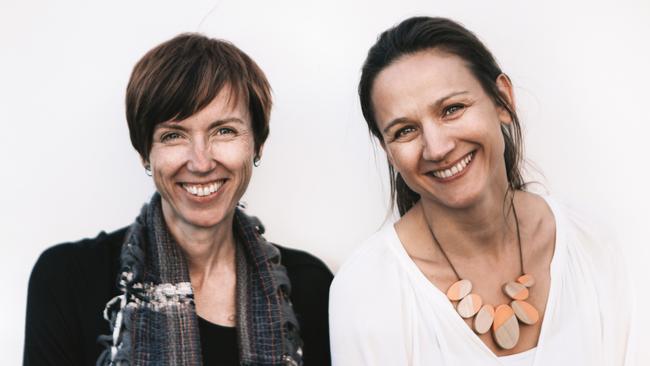
Sampa the Great
Anyone who says musicians can’t be inventors hasn’t heard of the Beach Boys and Pet Sounds. The UK music bible NME wrote of Zambia-born Australian Sampa Tembo (stage name Sampa The Great): “As Sampa began her ascent in Australia in the mid-2010s, the country’s landscape for hip hop and its related genres was also beginning to change … With the 2017 release of the Birds and the BEE9 mixtape – a gorgeous fusion of hip hop, jazz, soul and gospel – Sampa The Great added more fuel to this fire of change.” Tembo made history in 2020 to win the prestigious $30,000 Australian Music Prize twice with judges praising her 2019 album The Return as “an absolutely magnificent work of art”. She subsequently relocated to Zambia to craft her follow-up album As Above, So Below, released in September 2022, and returned to Australia to perform last year at the Sydney Opera House. Featuring nods to neo-soul and roots in her native country’s Zamrock movement of the ’60s and ‘70s, the genre-altering artist has pioneered her unique sound across borders, peddling verses in languages such as Swahili, Bemba and Nyanja over ethereal ballads and high-octane beats. After performing alongside global industry heavyweights Kendrick Lamar and Denzel Curry, and appearing on the Academy Award-winning film Black Panther: Wakanda Forever soundtrack, she returns to headline next month’s Volume Festival at the Art Gallery of NSW, where she will grace a stage in the recently unveiled North building extension. – Bianca Farmakis
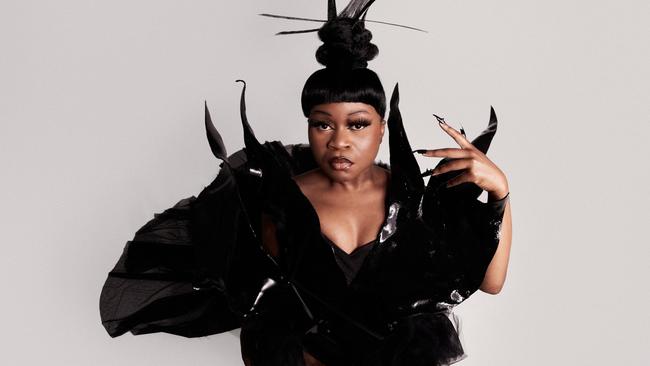
Rode microphones
In 1967 a Swedish couple migrated to Australia and opened an eponymous electronics store – Freedman Electronics – in a modest shopfront at Summer Hill in Sydney’s inner west. Would they ever have foreseen the heights to which their son, Peter Freedman, might take the business? Now known as Røde Microphones, it is a $318 million powerhouse producing world-leading audio equipmentand that is beloved by a generation of indie filmmakers, TikTokkers, YouTubers and podcasters alike. Røde sells microphones, headphones, interfaces and mixers but there are several innovations created by the company that stand out as having been pivotal to its success.
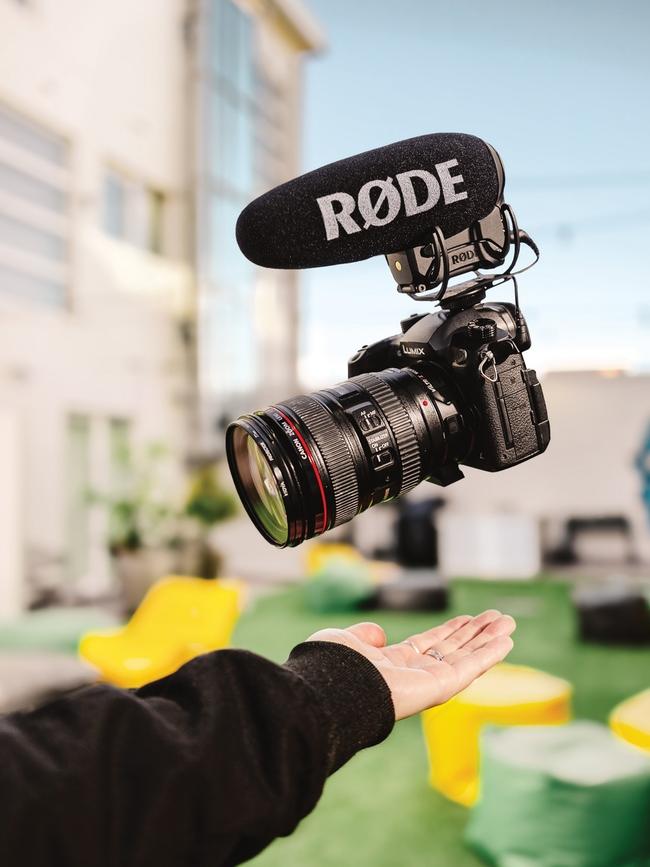
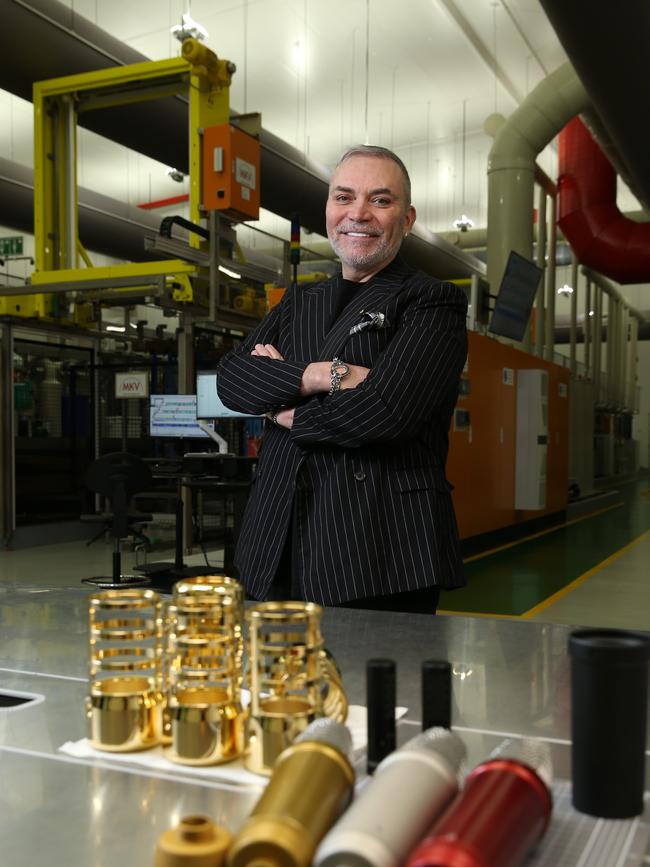
First, the VideoMic – the world’s first compact on-camera shotgun microphone, which launched in 2004 – gave a new generation of filmmakers and videographers the chance to match high quality audio with the high quality video being created by DSLR cameras. Røde was also quick to act when the world of podcasts began to boom. In 2007 the brand released the Podcaster microphone to acclaim – and in 2018 it hit the right chord again with the world’s-first podcasting console, the RODECaster Pro, which allows anybody to helm an entire podcast production from one unit. – Jessica Clement

To join the conversation, please log in. Don't have an account? Register
Join the conversation, you are commenting as Logout